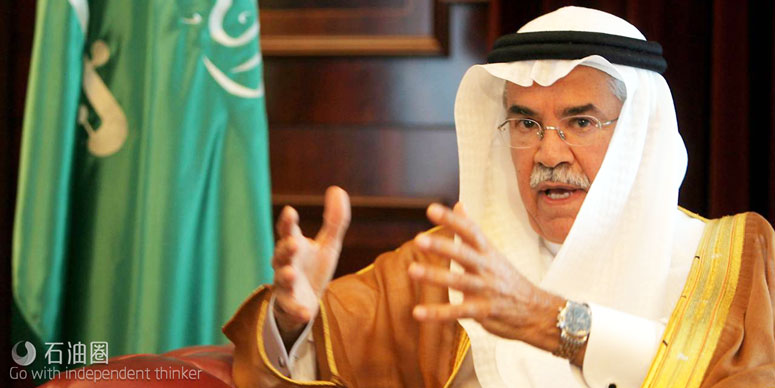Tis’ the season to not be a curmudgeon, but let’s not throw common investment sense away, because OPEC made a deal. This cutback on production has been a long time coming, and possibly the Saudi-Iranian rift has taken on cooler heads, but there are numerous problems that aren’t being considered by the market moving forward. Supplies, according to the Energy Information Administration (EIA), are still at an all-time high, and the U.S. shale market is more nimble and better positioned than ever to fill the gap left by OPEC.
Basic economics dictates that a stronger dollar will also put added downward pressure on crude reaching the $60-70 a barrel range. The dollar has reached highs not seen since 2003, and with the Federal Reserve raising rates, the Dow rapidly moving towards 20,000 and inflation on the uptick, there are many reasons to not let irrational exuberance overtake sound decision-making. But it’s this oil glut, and not enough demand, that will drive this market. Still, the strong dollar being reinforced by major banks and brokerage houses worldwide is worrisome for price spikes regardless of production cuts.
When making prudent financial decisions it also helps to understand what the biggest market maker for OPEC, Saudi Arabia, is saying – being publicly for a cut but privately, and even longstanding Saudi oil and gas kingmakers are suggesting this, the Kingdom wants something entirely different. Former Saudi-oil minister Ali Al-Naimi said in November at a Center for Strategic and International Studies event, “OPEC’s agreement to cut production has the potential to balance the market, but unfortunately we tend to cheat, and there’s still more supply than demand.”
In the past, OPEC members have not lived up to their pledges of cutting oil production, but still it is surprising that such a high-ranking former oil minister would be so blunt.
Saudi Arabia also announced an Aramco event in Dhahran that they have signed a ten-year joint agreement with the U.S. firm, Nabors Industries Ltd. to build 50 onshore rigs. What this means for OPEC’s largest supplier’s eagerness to abide by their decision to cut production at or below 10mbp is illogical at best.
Cushing, Oklahoma is an unlikely reason to not believe the OPEC cuts will restore fortunes, but this tiny U.S. town is being overlooked. This is the corridor in the U.S. where oil goes to live, and right now they have more oil sitting in storage than they know what to do with. This is the reason OPEC is worried, and traders should be as well. The amount of oil sitting in storage at the largest facility in the U.S. is at record levels. Factoring this in to your investment decisions and going back to the basics of supply and demand suggests that oil will hover in the 50s.
Unless China, the U.S., Europe, India, or South America can hit sustained growth that requires vast amounts of energy, then tiny Cushing, Oklahoma will affect OPEC more than supply cuts from them and other non-OPEC producers.
It’s hard to argue that the winners of this production cut are U.S shale drillers. Since the downturn, and Saudi led war against Shale, these firms have grown more effective, efficient and profitable. An example is the monstrous new frac-job currently being drilled by Chesapeake Energy. At $100 barrel oil prices, debt loads and unbalanced balance sheets were the norm, with banks lining up to give easy credit. Once the market pushed downward though, those easy credit terms dried up.
But shale-drilling companies have learned to adapt, and to adopt frac-sand as another way to reduce their cost of drilling. These companies are more agile now, and seemingly could weather production outpouring and now production cuts. The OPEC deal will have a hard time staying firm once these supplies come back into the market.
Libya and Nigeria have also announced they are both bringing large terminals and oilfields back online. Both countries were exempt from the deal – though somehow Iraq wasn’t interestingly enough – because of domestic militancy unrest. Hundreds of thousands of barrels of oil are at stake if both countries can bring these resources back to the market. They are saying they can, and the majors are moving back into these countries to restore their lost fortunes.
Demand is another factor weighing against this deal working. According to the International Energy Agency (IEA) the bigger issue not considered in the agreement is weakening demand, because of prices rising and Asia, led by China, experiencing moderate economic difficulty. Higher U.S. rates have historically caused downward pressure on demand and consumption. The U.S. dollar and Federal Reserve, along with worldwide demand, will need to be considered, and not an agreement to cut between 1.2 to 1.5 mbd.
The biggest factor not being understood that could raise prices above the $70 a barrel range is the geopolitical situation. The U.S. and Iran are sparring again over a sanction continuation after 99 U.S Senators voted to continue them, which ledIran to expedite a nuclear submarine program. Further, the markets will possibly be spooked by China seizing an underwater, innocuous U.S. drone for reasons that haven’t been given yet by the Chinese government. This could possibly be over breaking the One-China policy when President-elect Trump spoke with his counterpart in Taiwan. Considering China, and what can be accomplished with Iran for markets to run smoothly are reasons to also understand your positions moving forward into the New Year.
Emerging and even mature economies can be hurt by higher U.S rates, a stronger dollar (since oil is priced in dollars) and a potential trade war with China that would cause domestic and foreign economies to choose sides. would be a challenge for OPEC and the current oil rally, but if supply, consumption or inventories respond too quickly we could be in for another downward cycle. It promises to be an interesting 2017 for oil prices.


 石油圈
石油圈
